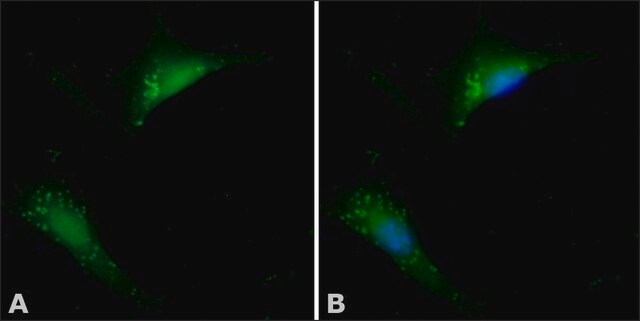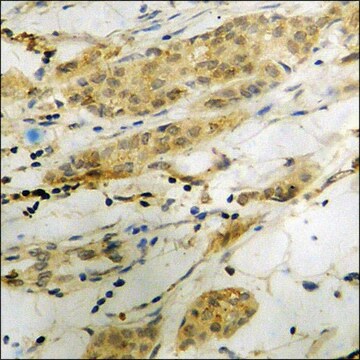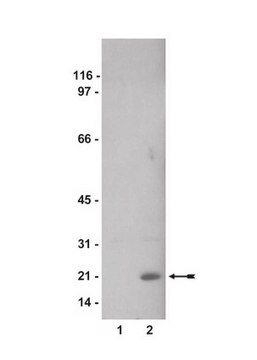C8992
Anti-phospho-Cofilin (pSer3) antibody produced in rabbit
IgG fraction of antiserum, buffered aqueous solution
Synonym(s):
Anti-18 kDa phosphoprotein, Anti-CFL1, Anti-Cofilin 1 (non-muscle), Anti-p18
About This Item
Recommended Products
biological source
rabbit
Quality Level
conjugate
unconjugated
antibody form
IgG fraction of antiserum
antibody product type
primary antibodies
clone
polyclonal
form
buffered aqueous solution
mol wt
antigen ~19 kDa
species reactivity
mouse, human, pig (predicted), rat (predicted)
technique(s)
western blot: 1:2,000-1:4,000 using whole extracts of HeLa human epithelioid carcinoma and mouse NIH3T3 cells
UniProt accession no.
shipped in
dry ice
storage temp.
−20°C
target post-translational modification
phosphorylation (pSer3)
Gene Information
human ... CFL1(1072)
mouse ... Cfl1(12631)
rat ... Cfl1(29271)
General description
Immunogen
Application
- as primary antibody for immunoblottingto to study the role of the Rac1 GTPase.
- for western blot analysis in a comparative study of signals induced by integrin ligation during cell attachment, mechanical force from intracellular contraction, or cell stretching by external force.
- as primary antibody for western blotting in a study to detect the level of cofilin.
Biochem/physiol Actions
Physical form
Disclaimer
Not finding the right product?
Try our Product Selector Tool.
related product
Storage Class Code
10 - Combustible liquids
WGK
WGK 3
Flash Point(F)
Not applicable
Flash Point(C)
Not applicable
Personal Protective Equipment
Certificates of Analysis (COA)
Search for Certificates of Analysis (COA) by entering the products Lot/Batch Number. Lot and Batch Numbers can be found on a product’s label following the words ‘Lot’ or ‘Batch’.
Already Own This Product?
Find documentation for the products that you have recently purchased in the Document Library.
Our team of scientists has experience in all areas of research including Life Science, Material Science, Chemical Synthesis, Chromatography, Analytical and many others.
Contact Technical Service





